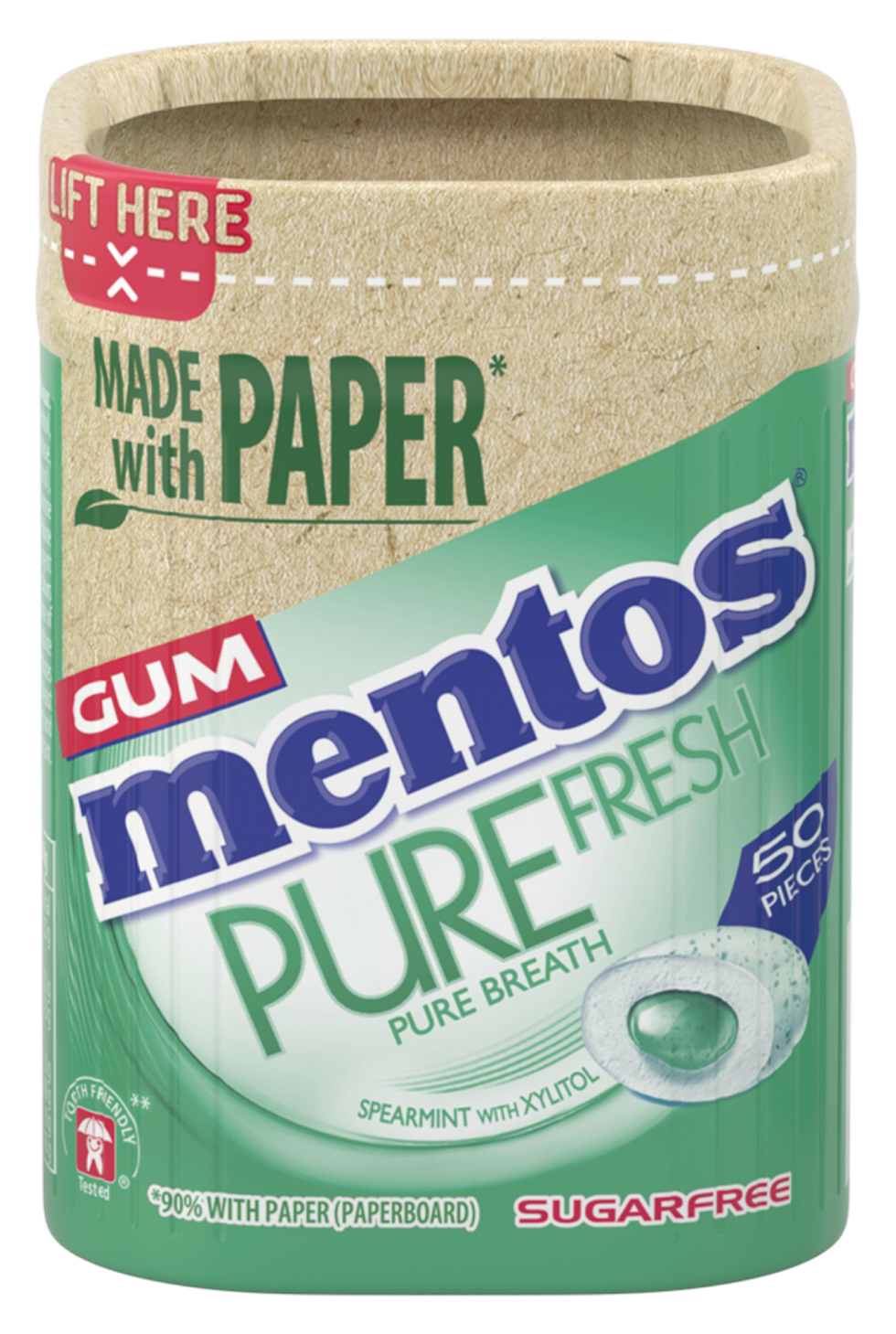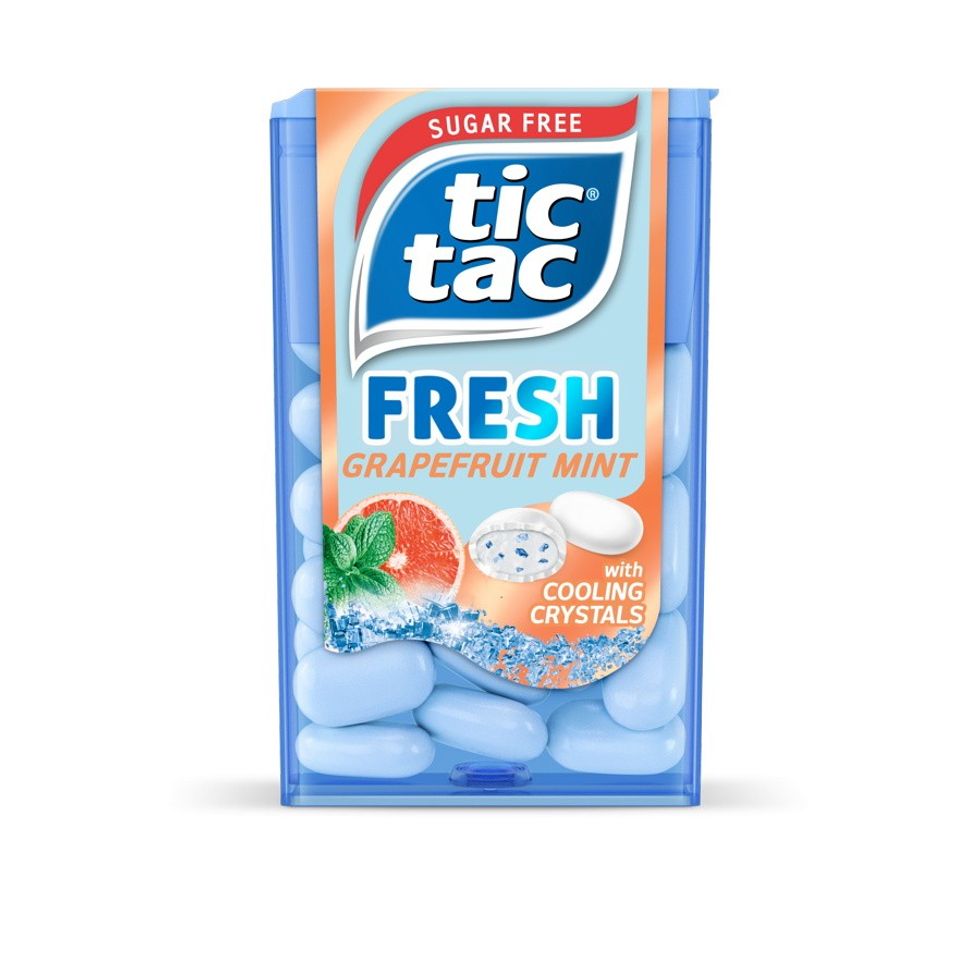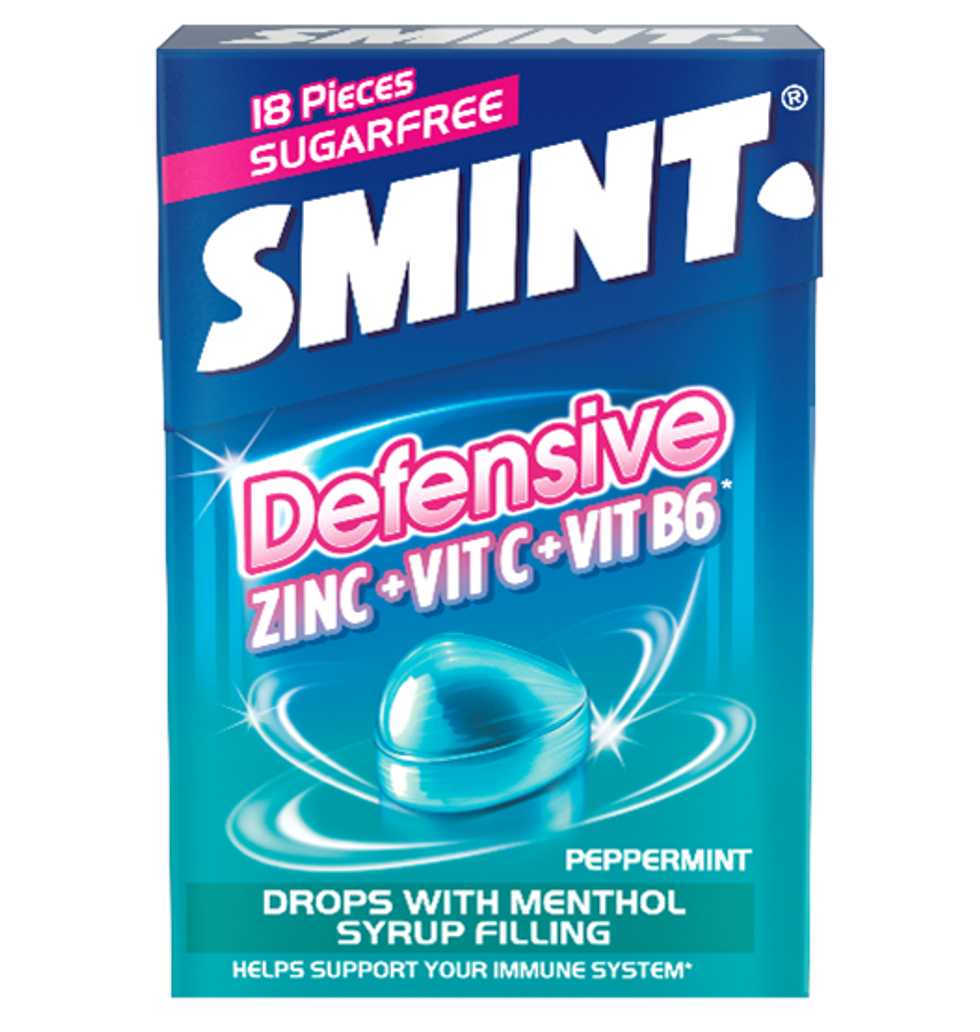Mints and gum are the perfect category for small shops, as demonstrated by the category's close proximity to the till. It is a vibrant category with great margins and a never-ending supply of NPDs, happily straddling several categories.
The category took a hit during the pandemic as the mint and gum occasion/fresh breath necessity was curtailed due to people working from home/not sitting in the car in traffic etc, and not socialising. However, now the country has returned to normal, the mints and gum opportunity is set to come roaring back (with fresh breath confidence!).
“Mints and gums are seeing positive signs of growth as more people continue to return to work following the Covid- 19 lockdowns,” comments Jason Sutherland, UK & Ireland sales director at Ferrero.
“The Tic Tac brand also showed great resilience and overall, the sugar confectionery segment is on an upward trajectory, driven by mints and gum which is the second growing segment, rising with double digits.”

Mark Roberts, marketing and trade marketing director at Perfetti Van Melle (PVM), agrees, adding that the marketing campaigns have been crucial in luring the consumers back.
“The pandemic certainly hit mints and gums hard as we stopped commuting and socialising, so we invested in marketing that would build brand awareness and encourage shoppers back into a ‘refreshment routine’,” he explains.
“There have been fantastic performances across Perfetti Van Melle portfolio this year as a result. Routines have most definitely changed for good, but the need to be ready, alert, and take time for yourself are as important as ever.”
According to IRI data, the gum category was worth £266 million in 2022, growing 18 per cent from the previous year. Roberts says their Mentos brand is outperforming the category with 34 per cent growth, driven by phenomenal annual sales and the launch of Mentos Pure Fresh Gum in paper bottles.
“We’ve seen fantastic performances across our portfolio leading Mentos Gum to be the number three brand within the category. Being sugar free, both Smint and Mentos Gum are HFSS compliant, which is important for retailers after the legislation introduction in October 2022,” he adds.
PVM has recently announced an agreement to acquire Mondelēz International’s developed-market gum business in the US, Canada and Europe, further bolstering its portfolio that includes iconic global brands such as Mentos, Chupa Chups and Alpenliebe.
“Perfetti Van Melle will be an excellent home for the management team and employees of Mondelēz’s gum business in North America and Europe,” said Egidio Perfetti, chairman of PVM Group.
Daniele Perfetti, vice chairman of PVM Group, added: “We have long admired the product and brand portfolio of the gum business and look forward to combining them with the Perfetti Van Melle brand family.”
The sale includes manufacturing facilities in Rockford, US and Skarbimierz, Poland and the gum brands Trident, Dentyne, Stimorol, Hollywood, V6, Chiclets, Bubbaloo and Bubblicious in the US, Canada and Europe, as well as the European candy brands Cachou Lajaunie, Negro, and La Vosgienne.
Mondelēz International will continue to operate its gum business outside the three markets, led by Stride in China, as well as all of its other candy brands and products. The transaction, which is subject to customary closing conditions, is expected to close in final quarter of 2023.
Novelty and innovation
Consumers are attracted to mints and gum products that offer new and interesting flavours, textures, and formats. Roberts credits the focus on fruit flavours for the growth of Mentos Pure Fresh Gum, which also drives new teenage and young adult shoppers into the category.
“Fruit gum is now worth £33m, up 26 per cent versus last year, in fact, Mentos is driving two thirds of the growth of the fruit gum market,” he says.
“Cherry and Tropical flavours along with Bubblefresh continue to accelerate growth, and we see lots of opportunity to grow this further among the 30 million Brits that chew gum. We are continuing to tap into the ‘Gen Z’ audience with activity led by TikTok social campaigns, VoD, OOH, PR all year round.”
Ferrero’s Sutherland also stresses on the huge opportunity provided by the flavours.
“While the category is traditionally aimed towards providing refreshing on the go moments, the introduction and popularity of fruit flavours in the last few years has enabled us to expand our portfolio, offering products for different occasions with fruity flavours that work as a little treat throughout the day,” he says.
Sutherland adds that their Tic Tac mints are showing rising penetration, with half of these buyers aged at 55 and 65+, translating into 1.3 million additional shoppers who are spending eight per cent more.
“Tic Tac has gained more than £1m in sales through winning shoppers with our fruit flavours which is predominantly gaining traction with a younger audience under 35, and we’re seeing many switch from more traditional hard candy or boiled sweets towards our vibrant, fruity flavours. Our expanding Tic Tac Fruits range has also supported our results, bringing in five million incremental value sales by attracting a younger demographic,” he notes.
While sugar category is now worth £1.5bn, up 10 per cent in the past year [Nilelsen], Tic Tac has shown steady growth, up 31 per cent compared to two years’ ago and increasing by 13 per cent this year, meaning this iconic brand is now worth £24.9m.
PVM’s Roberts says that their Smint is also well on its way to pre-pandemic levels, with sales soaring ahead of the category.
According to the IRI data to 21 January 2023, Smint holds a dominant 35 per cent share of the sugar-free mint market, growing at three times the rate of the category. With a value of £9.5m and a growth rate up 44 per cent in the last four weeks alone, there’s never been a better time for retailers to invest in and stock-up on Smint, he added.
The Smint range features a variety of popular flavours including Peppermint, Spearmint, Sweet Mint and Strawberry, which can be purchased in tin, bottle, and dispenser formats. The portfolio was also refreshed last year to include the new Smint Defensive, which launched in response to the growing demand for immune enhancing products.
Available in a widely recyclable 18-piece Flip Top Box, Smint Defensive’s sugar free peppermint lozenges contain Vitamin C, B6 and Zinc, which help to support the immune system and reduce tiredness and fatigue.
Meanwhile, Mentos has entered new market with tangy Sour Gum, launched in December.
The sour gum category is growing 45 per cent MAT, showing consumers’ appetite for this flavour profile. Mentos Sour Gum is HFSS-compliant and available in two popular flavours: Sour Apple and Strawberry, with 15pcs in a pocketable bottle, making it the ideal on-the-go size.
The launch followed the recent successes of the Mentos Pure Fresh Gum range after a summer of ATL activity that represented an investment of £1.5m in the category.
“Research shows that tangy sour flavours hold more appeal for younger demographics than traditional mint flavours,” said Kim McMahon, Mentos Gum brand manager. “Delicious tangy Mentos Sour Gum will introduce younger consumers to the Mentos Gum brand and improve category consideration for the rest of the range.
“We’ve given a lot of thought to the taste experience during development – the crunchy outer shell gives way to the satisfying texture of the liquid fruit centre, combining to give this delicious sugar free gum its unique sour taste. As the UK’s leading manufacturer of sugar-free confectionery, this HFSS-compliant Mentos Sour Gum is the natural next step for us in the gum space.”
The launch is supported by a social media campaign, with in-store activity planned for this year. Mentos Sour Gum is HFSS-compliant, meaning there are no geographical limitations on where it can be merchandised and making it a must-stock.
Wellness mission
Being sugar free both Smint and Mentos are HFSS compliant, Roberts notes, adding that offering more choice in range, brand and flavour should be a key focus for retailers to cater to the new shoppers and drive growth in the category.
“With significant marketing spend to further ensure shoppers can try these outstanding products, some exciting innovation coming into the brand this year and merchandising opportunities increased by forthcoming HFSS legislations, we can only see this progressing,” he says.
Ferrero’s Sutherland also emphasises the importance of stocking a selection from the major brands.
“Tic Tac is an iconic brand when it comes to the mints category, and a familiar sight for UK shoppers in the confectionery aisles. The original Tic Tac Fresh Mint is still our most popular product. With it largely being an impulse purchase, consumers will expect a choice of mints and gums, with an array of varying price points and pack sizes depending on their needs,” he notes.
“By ensuring they have classic flavours, as well more inventive offerings such as sour fruit varieties which include Fruit Adventure, Lime & Orange, and our new Berry Bliss it will allow retailers to capitalise on impulse purchases.”
Discussing the impact of the HFSS legislation Sutherland says Ferrero has been working in collaboration with retailers, continuously listening to the challenges they have in relation to HFSS sales.
“We are and will remain in constant dialogue with them to help mitigate some of their concerns by providing solutions to help with new layouts and range solutions. Part of this was the development of our HFSS-compliant Fresh range. Consumers will still be seeking out sugar confectionery, so it’s about ensuring it remains visible in store and that you clearly signpost to where shoppers can head if they want to purchase sweet treats,” he says.
With confectionery moving away from the front of the store for some independent retailers, he recommends to trial products in different areas of the store, especially alongside other on-the-go products, such as lunchtime bites or near the magazines.
Promotional changes
Roberts points out the impact of the HFSS rules on promotions, with the HFSS legislation originally set to remove multibuys.
“Many retailers began implementing the changes and, in some cases, have carried on,” he notes, adding that this impacts the promotional share and base prices, the latter being already in flux in recent years with the trend of moving away from singles across candy and gum, as bigger format bottles and bags became more appealing to shoppers, shifting the average unit price in the market.
“But what we know is that confectionery remains a fixture in high demand, and with the relatively low entry point to the category the treat role that the category plays will remain relevant and important to shoppers as more pressures take effect,” he says.
Sutherland bats for PMPs which make up 28 per cent of sugar confectionery value in convenience (IRI, 2022), saying they should definitely be considered as part of a wide and varied portfolio.
“We know that available spend for food and drink will fall for many in the months ahead due to overarching cost pressures and inflation, which is where PMPs can offer value,” he says.
“Consumers will still seeklittle treats though, whether chocolate or sweets, so these will remain on the shopping list in 2023. As such, it’s important for retailers to continue to offer quality products within their confectionery range, particularly when it comes to single formats.”

He asks retailers to take proactive measures to ensure their sugar confectionery offering stands out and attracts shopper interest through stocking recognisable and trusted brands such as Tic Tac. “We’re well-known for our quality products, so stocking a strong core range helps provide retailers with relevance year-round,” he suggests.
Ferrero has been investing in a fully through-the-line marketing campaign for the brand over the last couple of years, keeping Tic Tac front of mind with a new TV advert and radio advert. In July last year, they introduced the sugar-free Tic Tac Fresh range across grocery and convenience, combining the need for a cool fresh experience with fruit flavours.
“Tic Tac Fresh has brought incremental value to the Tic Tac brand and supported wider category growth, it has provided over £100,000 in value sales and £56,000 in incremental value,” Sutherland says. “As a HFSS-compliant range, it will help retailers attract new consumers to the sugar confectionery fixture.”
Looking to the future, the mints and gum market in the UK is expected to continue to experience growth, driven by increasing demand for healthier, more natural, and functional products. While the market has faced some challenges in recent years due to the Covid-19 pandemic, it has also played a role in driving demand now, as consumers have become more concerned about maintaining good oral hygiene.
Consumers are increasingly looking for mints and gum products that offer functional benefits such as freshening breath, promoting oral health, and reducing stress. Retailers would do well by offering products that incorporate natural ingredients and low sugar or sugar-free formulations.
Given the impact of HFSS regulations in the larger stores, strategic placement of mints and gums is all the more important, and offering multipack bundles would be helpful in nudging customers to buy more than one pack at a time. This can also be an effective way to offer a variety of flavors in one purchase, which can increase customer satisfaction.
Cross-promoting mints and gums with other products in the store, such as soft drinks, snacks or sandwiches, offering free samples of new or popular mints and gums to encourage customers to try them and using eye-catching signage to draw attention to the mints and gums section of the store, while communicating the benefits of the products and any promotional offers that are currently available, are some of the methods retailers can adopt to encourage impulse purchases and increase sales.









